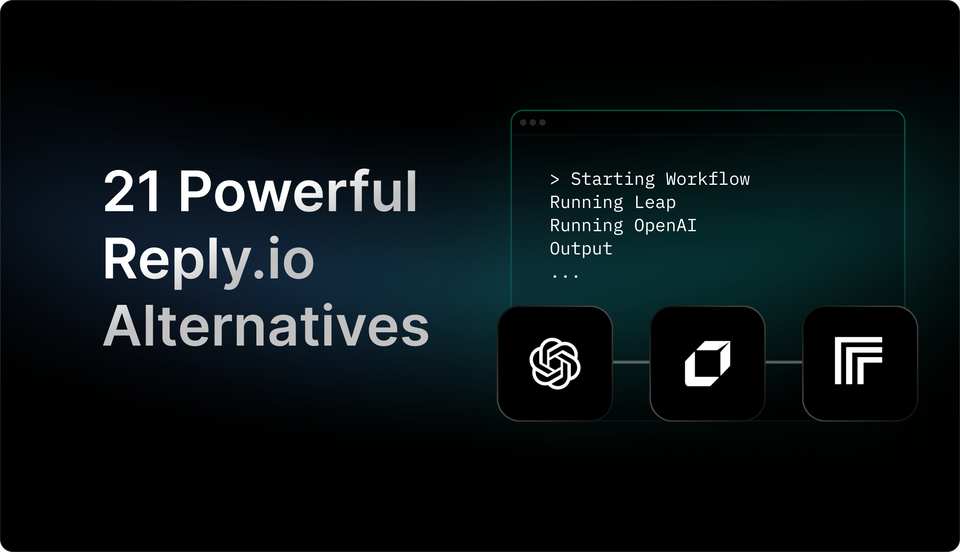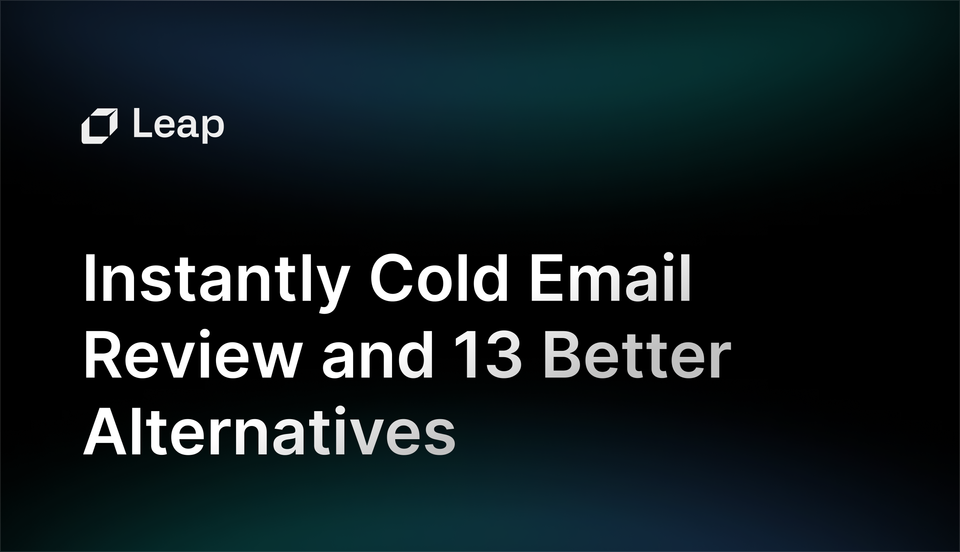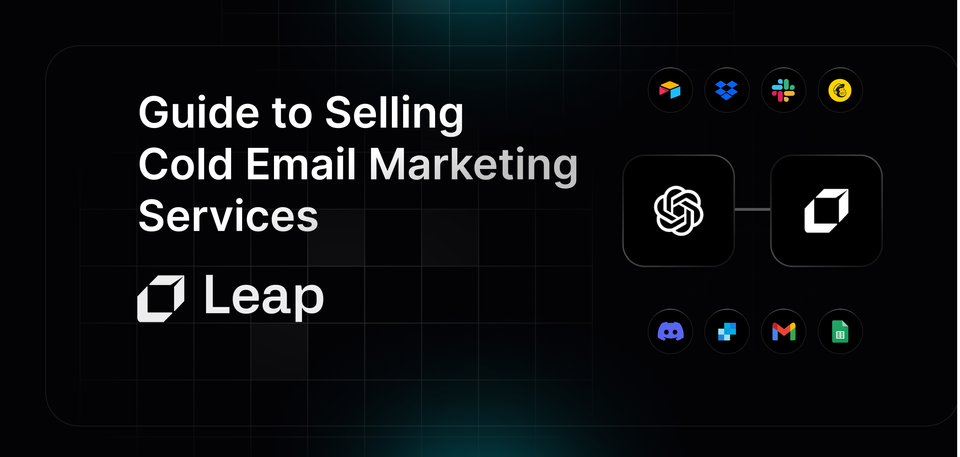How to Master Personalized Outreach at Scale: A Comprehensive Guide
Discover ways to tailor your outreach reach a large audience. This guide covers what you need to know about personalized outreach at scale.
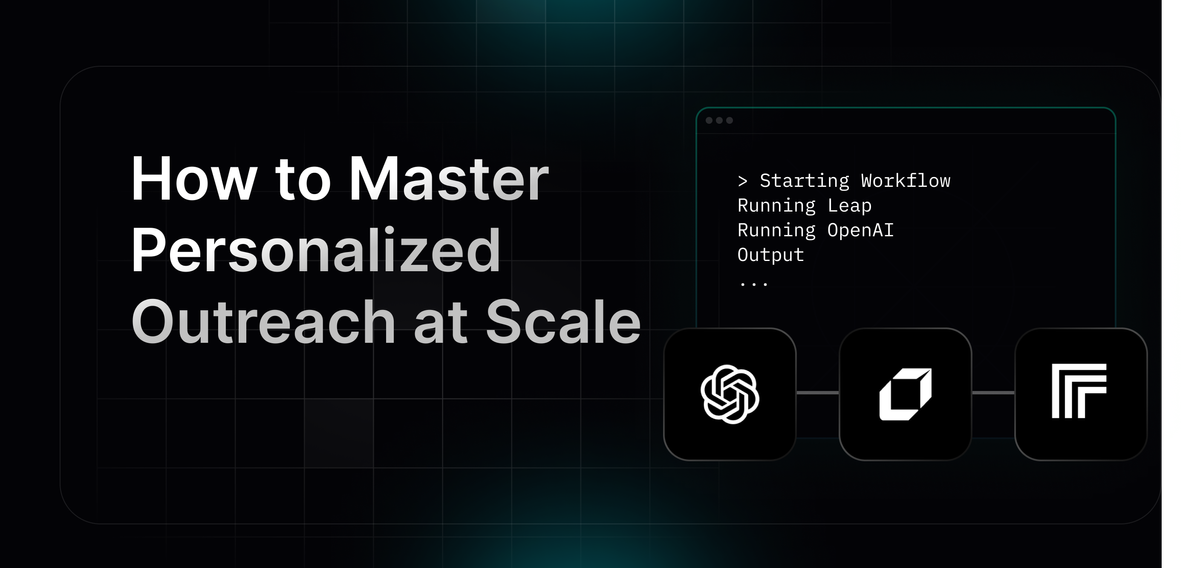
Personalized outreach at scale is a game-changer for businesses that want to build genuine relationships with their customers in a time-efficient way. Crafting a one-to-one approach in cold email outreach guarantees that your message will not only reach your target audience but do so in a personalized and relevant manner. This strategy allows you to make a more profound connection with your leads and entice them to come back to your business. The end result is a more effective and efficient way to boost your cold email campaigns and drive sales.
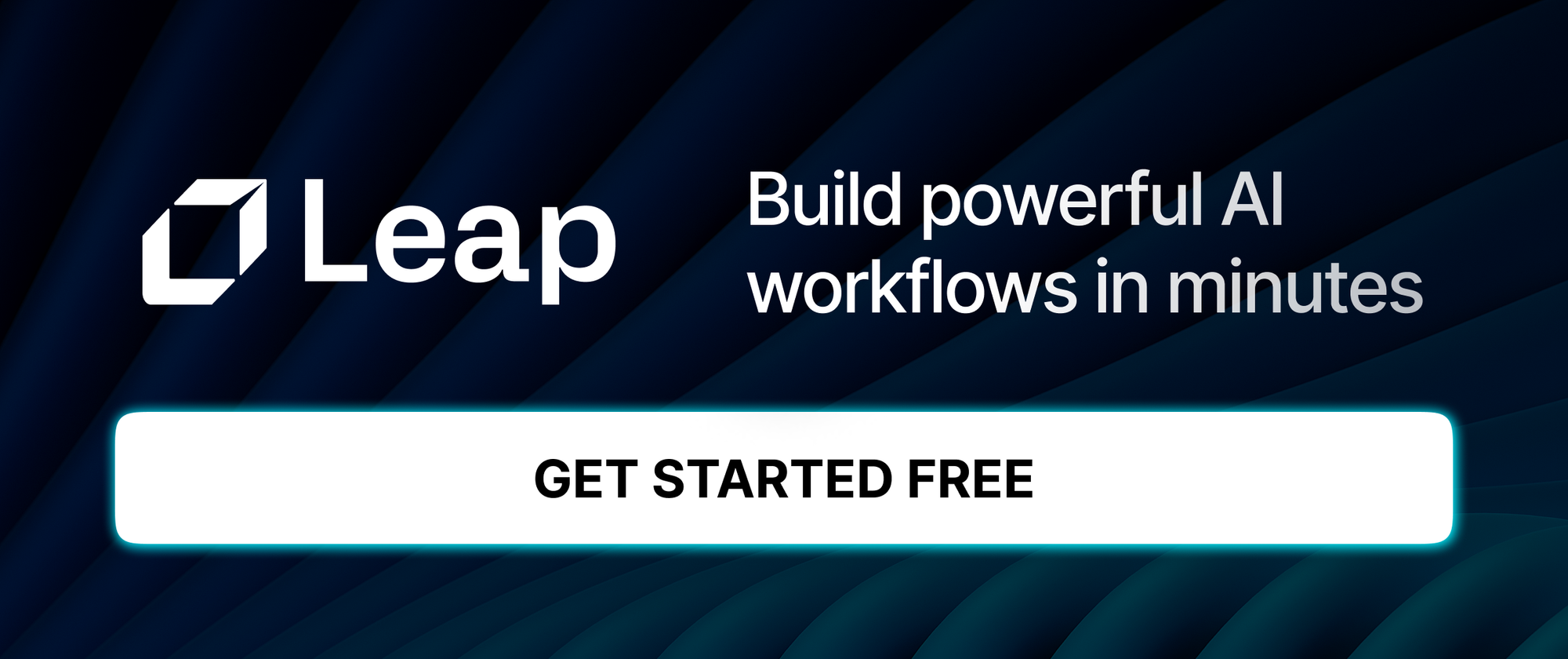
What Is Personalized Outreach And Why It Matters

Personalized experiences have become a cornerstone of digital marketing. Today, consumers are constantly bombarded with generic messages from brands. They want something more, something that resonates with them on a personal level. This is where personalized experiences come in. People want to feel seen, heard, and understood. If a brand can cater to these needs, it stands a much better chance of winning over its audience. Personalization isn't just a trend; it's a necessity in today's digital landscape.
Significance in Modern Marketing
Personalized outreach involves crafting messages that are tailored to individual customers. Instead of sending the same generic message to everyone, personalized outreach allows you to create highly targeted campaigns that speak directly to the needs and wants of each consumer.
The result?
- Higher engagement
- Better conversions
- Increased customer loyalty
Benefits of Personalized Outreach at Scale
Personalized outreach at scale offers several benefits.
- It leads to improved engagement.
- Customers are more likely to pay attention to messages that they feel are crafted specifically for them.
- Higher engagement, in turn, leads to better conversions.
- Customers who feel seen and heard are more likely to make a purchase.
- Personalized outreach at scale helps to build customer loyalty. When customers feel that a brand truly understands them, they're more likely to return again and again.
Standing Out and Building Connections with Customers
In a sea of generic messages, personalized outreach helps businesses stand out. When a customer receives a message that speaks directly to them, they're more likely to pay attention. This helps businesses cut through the noise and build stronger connections with their customers. Whether it's birthday discounts, personalized product recommendations, or tailored content, personalization helps businesses stay top of mind and create a lasting impression.
Improving Customer Satisfaction and Loyalty
Personalized outreach also plays a critical role in improving customer satisfaction and loyalty. Customers who feel understood and valued by a brand are more likely to become repeat customers. They're also more likely to recommend the brand to friends and family. By making customers feel special, personalized outreach builds stronger, longer-lasting relationships that benefit both the customer and the business itself.
Automate Using AI Workflows
Leap helps you to automate your work with the power of AI. Partnered with Zapier, Vercel, and more, Leap enables you to supercharge your work by allowing you to create custom AI automations. Create sophisticated AI automations with no-code. Connect the tools you love with best-in-class AI text, image, and audio models.
Supercharge your existing tools with seamless AI integrations to OpenAI, Microsoft, and more. From summarizing documents, to voice translation, to AI call transcription, to AI avatar and asset generation, to SEO automation, to even automating the cold email creation and sending process, automate anything with Leap Workflows. The opportunities for automation are endless with Leap workflows.
Try Leap’s AI Workflows tool for free today.

Building a Strong Foundation For Personalized Outreach: Understanding Your Audience

Audience research lays the foundation for effective personalized outreach by providing insights into your target customers' needs, preferences, and behaviors. Developing detailed buyer personas helps you understand your audience segments on a deeper level, enabling you to tailor your messaging and outreach strategies accordingly. Investing time and resources into audience research and persona development is crucial for ensuring your personalized outreach resonates with your intended audience.
Strategies to Gather Data on Customer Preferences, Behavior, and Demographics
Leverage website analytics tools to track visitor behavior, engagement patterns, and demographic data. Conduct surveys and customer interviews to gain direct feedback on preferences, pain points, and buying motivations. Analyze social media conversations and online communities to understand your audience's interests, challenges, and language.
Collect and aggregate data from customer relationship management (CRM) systems, purchase histories, and customer support interactions. Utilize third-party data sources, such as market research reports and industry benchmarks, to supplement your customer data.
Leveraging Customer Insights to Inform Personalized Outreach Efforts
Use persona data to tailor your messaging, content topics, and communication channels to align with each segment's preferences and behaviors. Incorporate customer feedback and pain points into your value propositions and solution messaging to address their specific needs. Analyze customer journey data to identify key touchpoints and optimize your outreach efforts accordingly.
Continuously update and refine your customer profiles based on ongoing data collection and analysis to ensure your personalization strategies remain relevant and effective.
Related Reading
Segmentation Strategies for Personalized Outreach

Audience segmentation involves dividing your broader target audience into smaller, more specific groups based on shared characteristics or behaviors. Segmentation is crucial for personalized outreach because it allows you to tailor your messaging, content, and communication channels to the unique needs and preferences of each audience segment. Effective segmentation ensures that your personalized outreach efforts are targeted, relevant, and resonate with the intended audience, increasing engagement and conversion rates.
Various Segmentation Criteria
Demographic Segmentation
Divide your audience based on factors such as age, gender, income, education level, and marital status.
Geographic Segmentation
Segment your audience based on their physical location, including country, region, city, or even neighborhood.
Psychographic Segmentation
Group your audience based on psychological traits, such as values, interests, lifestyles, and personality characteristics.
Behavioral Segmentation
Segment your audience based on their interactions with your brand, including purchase history, engagement patterns, and online behaviors.
Examples of Effective Segmentation Strategies
Personalizing Fashion Trends for Different Demographics
A clothing retailer segments their audience based on age and gender demographics, allowing them to personalize their product recommendations, marketing messages, and visual content to appeal to each segment's distinct style preferences and fashion trends.
Tailoring Travel Recommendations to Diverse Audiences
A travel company segments their audience based on geographic location and psychographic interests, enabling them to curate personalized destination recommendations, travel content, and promotional offers that align with each segment's travel motivations and cultural interests.
Customizing SaaS Solutions Based on User Behavior
A SaaS company segments their audience based on behavioral data, such as product usage patterns and engagement levels, allowing them to deliver targeted in-app messages, educational content, and personalized upsell opportunities tailored to each segment's specific needs and pain points.
Enhance Efficiency with Leap's AI-Powered Automation
Leap helps you to automate your work with the power of AI. Partnered with Zapier, Vercel, and more, Leap enables you to supercharge your work by allowing you to create custom AI automations. Create sophisticated AI automations with no-code. Connect the tools you love with best-in-class AI text, image, and audio models.
Supercharge your existing tools with seamless AI integrations to OpenAI, Microsoft, and more. From summarizing documents, to voice translation, to AI call transcription, to AI avatar and asset generation, to SEO automation, to even automating the cold email creation and sending process, automate anything with Leap Workflows. The opportunities for automation are endless with Leap workflows.
Try Leap’s AI Workflows tool for free today.
Crafting Targeted Messages: Best Practices and Examples

When it comes to personalized outreach at scale, the key to success lies in crafting messages that resonate with specific audience segments. By leveraging audience data and personas, you can tailor your messaging to each segment's unique interests, pain points, and communication preferences.
- Using personalization tokens such as the recipient's name, location, or browsing history can create a more individualized and relevant experience for the recipient.
- Make sure to align your messaging with the customer's stage in the buyer's journey, addressing their current needs and concerns effectively.
- To further connect with your audience, incorporate stories and examples that speak to their experiences and values, keeping your messaging concise, clear, and focused on the most relevant value proposition for each segment.
Tone, Language, and Messaging Alignment with Customer Preferences
The tone and language of your messages play a crucial role in how they are perceived by your audience. Tailoring your messaging tone (be it formal, casual, or humorous) to match the personality and communication style preferred by each audience segment can significantly impact the effectiveness of your outreach efforts.
Using language that resonates with the segment's industry, interests, or cultural background fosters a stronger connection with your audience. It is essential to ensure your messaging is inclusive, respectful and aligns with the segment's values and beliefs to establish credibility and trust.
Successful Personalized Messaging Campaigns Across Various Channels
Successful personalized messaging campaigns across various channels have set a benchmark for reaching and engaging audiences effectively.
- Sephora's personalized campaigns featuring product recommendations based on purchase history and preferences have been a hit.
- Social media giants like Netflix have excelled in tailoring content and creative assets based on users' viewing habits and interests.
- Amazon has taken personalization to the next level on its website, providing users with personalized product recommendations and targeted messaging based on browsing and purchase data.
These examples demonstrate the power of personalized outreach at scale in forging strong connections with customers across different channels.
Leveraging Technology for Personalized Outreach at Scale

Technology plays a pivotal role in executing personalized outreach at scale. Without technology, segmenting audiences, and crafting individualized messages is tedious and inefficient. Technology solutions allow businesses to collect, analyze, and act on customer data in real-time, facilitating personalized outreach efforts across multiple channels and touchpoints. Marketing automation, CRM systems, and data analytics platforms are essential for executing personalized outreach campaigns at scale.
Tools and Platforms Facilitating Personalization
Various tools and platforms facilitate personalization at scale, including Marketing Automation, CRM Systems, and Data Analytics. Marketing Automation platforms like Leap AI, HubSpot, Marketo, and Pardot enable automated email campaigns, lead scoring, and personalized content delivery based on audience segments.
CRM Systems like Salesforce, Zoho, and Microsoft Dynamics allow businesses to manage customer data, track interactions, and personalize their sales and marketing efforts. Data Analytics tools like Google Analytics, Tableau, and Power BI provide insights into customer behavior, preferences, and engagement patterns, informing personalization strategies.
Key Features Enabling Personalized Outreach
Key features that enable personalized outreach at scale.
Email Automation
Helps create personalized email campaigns based on audience segments, behaviors, and preferences.
Lead Scoring
Prioritizes and personalizes outreach efforts based on lead scores determined by data.
Customer Profiling
Helps in developing detailed customer profiles by consolidating data from various sources, enabling more targeted and personalized messaging.
Workflow Automation
Helps automate personalized outreach sequences, nurture campaigns, and follow-up communications based on customer actions and triggers.
Benefits of Using Technology for Personalized Outreach
There are numerous benefits of using technology to streamline and optimize personalized outreach efforts.
- Efficiency is increased as automation and data integration streamline the process of segmenting audiences, creating personalized content, and executing targeted campaigns at scale.
- Consistency is ensured across multiple channels and touchpoints, reinforcing personalization efforts.
- Data Management allows for a comprehensive view of customer data, enabling more accurate and personalized outreach.
- Scalability is achieved as technology solutions can scale alongside the business, enabling personalized outreach to larger audiences.
- Measurement and Optimization are enhanced through tracking the performance of personalized campaigns and leveraging analytics to continuously refine and optimize outreach efforts.
Tips and Techniques for Personalized Outreach in Email Marketing

Email remains one of the most effective channels for personalized outreach, with high open and conversion rates when done correctly. Personalized emails feel more relevant and valuable to recipients, increasing engagement and driving better results. Email provides numerous opportunities for personalization, from subject lines and content to segmentation and automation.
Best Practices for Crafting Personalized Email Campaigns
Subject Lines
Incorporate personal details (name, location, recent activity) to grab attention and increase open rates.
Content
Tailor messaging, offers, and call-to-action based on audience segments, preferences, and behaviors.
Segmentation
Divide email lists based on demographics, interests, purchase history, and engagement levels for more targeted messaging.
Automation
Use triggered emails and nurture sequences to deliver timely, personalized content based on specific actions or milestones.
Testing
Continuously test subject lines, messaging, and design elements to optimize personalization strategies.
Successful Examples of Personalized Email Marketing Campaigns
Spotify
Year-in-Review emails with personalized playlists and listening insights for each user.
Airbnb
Personalized travel recommendations and destination content based on user preferences and search history.
Stitch Fix
Curated clothing selections and style advice tailored to each customer's unique style profile. Speaking of, check out this AI color analysis tool.
Supercharge Your Workflows
Leap helps you to automate your work with the power of AI. Partnered with Zapier, Vercel, and more, Leap enables you to supercharge your work by allowing you to create custom AI automations. Create sophisticated AI automations with no-code. Connect the tools you love with best-in-class AI text, image, and audio models.
Supercharge your existing tools with seamless AI integrations to OpenAI, Microsoft, and more. From summarizing documents, to voice translation, to AI call transcription, to AI avatar and asset generation, to SEO automation, to even automating the cold email creation and sending process, automate anything with Leap Workflows. The opportunities for automation are endless with Leap workflows.
Try Leap’s AI Workflows tool for free today.
Top Strategies for Personalized Outreach in Social Media

Social media platforms have revolutionized the way brands can engage with their audience. They offer invaluable opportunities for personalized outreach and customer engagement. By leveraging social data, such as interests, behaviors, and demographics, brands can tailor content and interactions to meet the unique preferences of each individual. This level of personalization can create a deeper connection with customers and lead to increased loyalty and engagement.
- Segmenting audiences based on social data is a powerful way to personalize content and interactions.
- By targeting specific groups with content tailored to their interests and preferences, brands can increase the relevance and effectiveness of their outreach efforts.
- Monitoring social conversations and engaging with individuals directly is another effective strategy.
- Providing personalized support or responses in real-time can demonstrate a brand's commitment to customer care and help build trust.
- Leveraging user-generated content and social proof is also key to creating relatable and personalized campaigns.
- By showcasing real customers and their experiences, brands can connect with their audience on a more emotional level.
- Using social advertising tools to deliver personalized ads and offers based on user data and behavior is yet another effective strategy.
- By targeting specific segments with relevant content, brands can increase the likelihood of conversion and engagement.
Examples of Brands Effectively Using Social Media for Personalized Outreach
Several brands have excelled at personalizing their outreach efforts through social media.
- Coca-Cola, for instance, launched its "Share a Coke" campaign, which featured personalized names and messages on bottles. Customers were encouraged to share their unique Coca-Cola experiences on social media, creating a sense of connection and community around the brand.
- Nike is another brand that has used social media to personalize its outreach efforts. Through its Nike+ apps and social channels, the company offers personalized workout plans and motivational content to its followers. These initiatives help build a deeper connection with customers and keep them engaged with the brand.
AI Workflows: Automate Your Work with the Power of AI
Leap helps you automate your work using the power of AI. Partnered with Zapier, Vercel, and more, Leap enables you to supercharge your work by creating custom AI automations. With Leap, you can create sophisticated AI automations without any coding knowledge.
Connect your favorite tools with best-in-class AI text, image, and audio models to supercharge your existing workflows. Automate anything with Leap Workflows, from summarizing documents to AI avatar generation.
Try Leap’s AI Workflows tool for free today.
Related Reading
- Cold Email Deliverability
- Best Time To Send Cold Emails
- Cold Email Tips
- Cold Email Follow Up
- Best Subject Line For Cold Emails
- Cold Email To Potential Client
- How Long Should A Cold Email Be
- Cold Email Conversion Rate
- How Many Cold Emails To Send Per Day
- Cold Email Sequence
- Cold Email Best Practices
- Cold Email Lead Generation
- Personalized Cold Email Examples
- Cold Outreach Strategy
- Cold Email Call To Action
- Best Cold Email Opening Lines
Personalized Outreach in Content Marketing: Delivering Relevant and Valuable Content

Content marketing is an integral part of personalized outreach, allowing us to deliver value and build trust with our audiences. Personalization is not just about adding a name to an email; it is about creating a unique experience for every audience member based on what we know about them.
Personalizing content resonates more strongly with our audience, nurturing relationships and guiding customers efficiently through the buyer's journey. Effective content marketing enables us to deliver more targeted and personalized messaging across multiple channels and touchpoints.
Creating Personalized Content Based on Audience Segments and Preferences
To create personalized content based on audience segments and preferences, we start by developing content pillars and topics aligned with the interests and pain points of specific audience segments. This creates a foundation for personalized content efforts. We then tailor content format, tone, and messaging to match each segment's preferences and consumption habits.
By leveraging dynamic content and smart content tools, we can deliver personalized experiences based on user data and behavior. Utilizing personalization tokens such as name, location, and industry, we can create a more individualized content experience.
Successful Content Marketing Campaigns with Personalized Elements
There are several examples of successful content marketing campaigns with personalized elements worth mentioning.
- HubSpot provides personalized content streams and recommended resources based on user profile data and topic interests.
- Buzzfeed creates quizzes and interactive content that adapts based on user responses for a truly personalized experience.
- Audible offers personalized book recommendations and curated content based on listening history and preferences.
These examples showcase how successful campaigns can be when personalized elements are incorporated strategically.
Metrics to Measure Success in Personalized Outreach

Key Performance Indicators (KPIs) for Personalized Outreach Success
Open Rates
Open rates are a key performance indicator for personalized outreach success, as they indicate how effective your personalized subject lines and messaging are in capturing your audience's attention and interest. Higher open rates signify that your personalized email or message content is resonating with your audience, compelling them to open and engage with your outreach efforts.
Click-Through Rates (CTRs)
Click-through rates indicate the percentage of recipients who click on links or call-to-action within your personalized content, demonstrating how compelling and relevant your content is to your audience segments. Increased CTRs show that your personalized content and call-to-action are effectively engaging your audience and compelling them to take further action.
Conversion Rates
Conversion rates are a vital KPI for personalized outreach efforts, representing the percentage of recipients who complete a desired action after engaging with your personalized outreach. Improved conversion rates signify the effectiveness of your personalized outreach in driving desired actions and achieving campaign objectives, such as purchases, sign-ups, or downloads.
Engagement Metrics
Engagement metrics, such as time on page, social shares, comments, and content consumption, provide valuable insights into the resonance of your personalized content with your audience. Tracking these metrics allows you to gauge the effectiveness of your personalized outreach efforts and identify areas for improvement.
Customer Lifetime Value (CLV)
Customer Lifetime Value (CLV) is a crucial metric for measuring the long-term value and loyalty of customers acquired through personalized outreach. Higher CLV for customers acquired through personalized outreach underscores the long-term impact and profitability of personalization strategies, highlighting the importance of personalized outreach in fostering lasting customer relationships.
Interpreting and Analyzing Metrics to Optimize Personalization Strategies
Establish Benchmarks and Track Performance Over Time
By setting benchmarks and tracking performance metrics over time, you can identify trends and opportunities for improvement in your personalized outreach efforts. Monitoring changes in key performance indicators allows you to measure the effectiveness of your personalization strategies and make informed decisions about optimizing your outreach campaigns.
Segment Metrics for Targeted Analysis
Segmenting metrics by audience groups, channels, and campaigns allows you to pinpoint areas of success and areas that require refinement in your personalization strategies. Analyzing metrics at a granular level provides insights into the performance of specific audience segments and helps tailor personalized messaging to different target groups.
Conduct A/B Testing and Experimentation
A/B testing and experimentation enable you to identify what resonates best with each audience segment and refine your personalization tactics accordingly. By testing different variations of personalized content, subject lines, and call-to-action, you can determine the most effective approaches for engaging your audience and driving desired actions.
Integrate Qualitative Feedback with Quantitative Metrics
Leveraging qualitative feedback from surveys, interviews, and social listening, in combination with quantitative metrics, offers deeper insights into customer preferences and behaviors. By integrating customer feedback with performance metrics, you can refine your personalization strategies based on a holistic understanding of your audience's needs and preferences.
Continuous Improvement in Personalized Outreach
Personalized outreach is an iterative process that requires ongoing refinement and optimization to maintain relevance and effectiveness. By continuously monitoring performance metrics, adapting to evolving customer data, and refining personalization strategies, you can deliver exceptional customer experiences and stay ahead of the competition in a fast-paced digital landscape.
Role of Customer Feedback and Data Analysis in Refining Personalization Strategies
Leveraging Customer Feedback
Soliciting direct feedback from customers through surveys, interviews, and reviews provides valuable insights into what resonates with your audience and areas for improvement in your personalized outreach efforts. By actively seeking and incorporating customer feedback, you can refine your personalization strategies to better meet customer needs and preferences.
Utilizing Data Analysis
Data analysis plays a crucial role in identifying patterns, trends, and opportunities for personalization optimization. By leveraging data from various sources, such as website analytics, CRM systems, and social media platforms, you can gain actionable insights into audience behaviors, preferences, and engagement with personalized content.
Monitoring Performance Consistently
Regularly tracking key metrics and campaign performance allows you to identify areas of success and areas that need refinement in your personalized outreach strategies. By monitoring performance consistently, you can quickly adapt and optimize your personalization efforts based on real-time insights and feedback from your audience.
Tips for Establishing Feedback Loops and Using Insights to Iterate and Improve Personalization Efforts
Encouraging Customer Feedback
Encourage and incentivize customer feedback through surveys, reviews, and social channels to gain valuable insights into audience preferences and improve your personalized outreach efforts. By actively engaging with customers and soliciting feedback, you can refine your personalization strategies based on direct input from your target audience.
Implementing Voice of the Customer (VoC) Programs
Deploying Voice of the Customer (VoC) programs can help you systematically collect and analyze customer feedback to inform your personalization strategies. By establishing structured mechanisms for gathering and analyzing customer feedback, you can identify emerging trends, preferences, and opportunities for optimizing your personalized outreach efforts.
Establishing Cross-Functional Teams for Review
Creating cross-functional teams to review customer data, feedback, and performance metrics regularly enables you to gain diverse perspectives and insights into your personalized outreach efforts. By collaborating across departments and leveraging a range of expertise, you can develop effective strategies for refining and optimizing your personalization campaigns.
Experimenting with New Personalization Tactics
Experimenting with new personalization tactics and strategies based on insights from feedback and data analysis allows you to innovate and optimize your outreach efforts continuously. By testing different approaches, exploring emerging trends, and adapting to changing customer preferences, you can refine your personalization strategies and stay ahead of the curve in a dynamic market environment.
Updating Customer Profiles and Segments
Continuously updating customer profiles, segments, and personas to reflect evolving preferences and behaviors enables you to tailor your personalized outreach efforts to meet changing customer needs. By staying agile and responsive to customer insights, you can deliver more relevant and engaging personalized content that drives desired actions and fosters lasting customer relationships.
Fostering a Culture of Data-Driven Decision-Making
Cultivating a culture of data-driven decision-making and continuous learning within your organization empowers teams to make informed choices about personalization strategies. By valuing data insights, customer feedback, and performance metrics, you can develop a more effective and responsive approach to personalized outreach that delivers exceptional customer experiences and drives business growth
Automate Workflows Seamlessly
Leap helps you to automate your work with the power of AI. Partnered with Zapier, Vercel, and more, Leap enables you to supercharge your work by allowing you to create custom AI automations. Create sophisticated AI automations with no-code. Connect the tools you love with best-in-class AI text, image, and audio models.
Supercharge your existing tools with seamless AI integrations to OpenAI, Microsoft, and more. From summarizing documents, to voice translation, to AI call transcription, to AI avatar and asset generation, to SEO automation, to even automating the cold email creation and sending process, automate anything with Leap Workflows. The opportunities for automation are endless with Leap workflows.
Try Leap’s AI Workflows tool for free today.
Overcoming Challenges and Common Pitfalls in Personalized Outreach at Scale

Strategies for Successful Personalization at Scale
To ensure successful personalized outreach at scale, it's crucial to have a solid strategy in place. Here are some strategies that have been proven to be effective in addressing these challenges and delivering personalized outreach at scale.
Balancing Personalization with Ethical and Legal Considerations
Balancing personalization efforts with ethical and legal considerations is vital to maintaining trust with consumers. Here are some suggestions for ensuring that personalization efforts are aligned with ethical and legal standards.
Related Reading
- Ai Sales Tools
- Cold Email Software
- Lemlist Alternative
- Mailshake Alternative
- Cold Email Marketing Services
- Cold Email Marketing Agency
- Instantly Cold Email
- Woodpecker Alternatives
- Reply.io Alternatives
Create Game Changing Automations Today With Leap’s AI Workflows
Using Leap AI Workflows, you can automate personalized outreach at scale. With this tool, you can automate the process of drafting personalized emails to potential leads and sending them out. You can use AI to analyze potential leads, determine the best approach for outreach, and even draft an email.
Scaling Personalized Outreach with AI Automation
With AI, you can increase the scale of your personalized outreach, saving time and effort while improving the quality of your communication. With Leap AI Workflows, you can supercharge your personalized outreach campaigns by automating the process. By automating your personalized outreach process, you can save time and focus on other aspects of your business.
Enhancing Efficiency with Automated Personalized Outreach
You can use Leap AI Workflows to reach potential leads in a more efficient and impactful way. By automating your personalized outreach, you can ensure that you are reaching out to the right people with the right message, at the right time.

